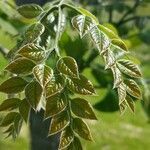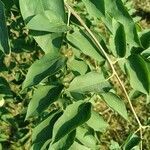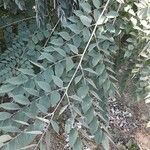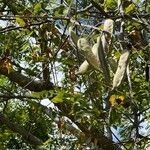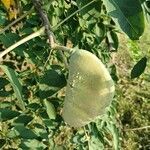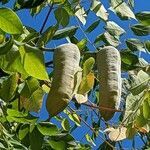Tree to 30 m; lvs to nearly 1 m, with 3–6 pairs of pinnae, each with several pairs of ovate, abruptly acuminate, short-petiolulate lfls mostly 3–8 × 1.5–4 cm, or the lowest pinnae replaced by single lfls; fls greenish-white, softly pubescent, in terminal panicles 6–20 cm; hypanthium 10–15 mm; pet and sep oblong or oblanceolate, 8–10 mm, exceeding the stamens; pods 8–25 × 3–5 cm; seeds thick and hard, 10–15 mm wide and long; 2n=28. Rich moist woods, seldom abundant; N.Y. to s. Minn. and se. S.D., s. to w. Va., Tenn., Ark., and Okla., mainly midwestern. May.
